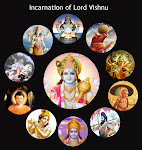SECTION 1 & 2- ( 12/08/13 BALVIHAR WEEK :10)
Beginning prayers
- Sahanaavavatu
- Meditation for 5 minutes
- Gurustotram verses 1-10 and 14th verse
Gita chanting
- Chapter 14 - 1st to 6th verse
- Raadhe Raadhe Raadhe
- Dashaavataram Stotram - 1-5 stanza
Bhagavatam Time:
- Dhruva
Likhita Japa
- Writing ‘Om’
Ending prayers and pledge
- sarve bhavantu sukhinah
- puurnamadah purnamidam
- arati
- Pledge
- Bhagvatam Time: We were back after a break of 2 weeks. We found out what the kids did during their holidays and how they had fun. Then we did the recap of the stories we did two weeks ago and continued with our stories.
Tale: Dhruva
King Uttaanpaada, the first son of Manu had two wives, Suniti and Suruchi. Suniti's son was Dhruva and Suruchi's son was Uttama. Suruchi was very beautiful and so the king liked her more. But she was terribly possessive that she would not even let the King meet Suniti and her son, Dhruva.
Dhruva, then asked his mother where he could find Narayana. His mother told Sri Narayana removes the miseries and fulfills the desires of those who take refuge in him. But He is not easily attainable. After years of intense devotion and tapas only one can realize Him as He is seated deep within our own hearts.
Dhruva thought over his mother's words and that night sneaked out of the palace and went into the deep forest. He spend many days and night without food, water and rest. Narada, heard the cries of the little boy and advised him to go back where he belongs and that the path he is treading on is really difficult. But the boy did not want to retreat from his desire and told Narada Ji that he is not going back without seeing the Lord. Upon talking to the boy, Narada understood that Dhruva was a sincere seeker and then taught him japa and showed him how to meditate. He gave him the sacred mantra "Om Namo Bhagavate Vasudevaya" and asked him to meditate constantly.
During the first few days meditation was hard then found the ultimate joy in it. He took terrible fasts, sipped water and breathed only once in a while. After months he lost all his consciousness from the outer world and went into deeper meditation. He stopped all the movements of his body and stood posed on the big toe of one foot. His penance was so strong that the three worlds began to rock. The Lord, now had to go and meet His devotee, mounted His Garuda and gracefully landed in front of Dhruva. Slowly Dhruva opened his eyes and was dazzled by the presence of the Divine Lord. Dhruva prostrated but was so struck that he could not utter a word. Dhruva didn't ask for anything but only asked the Lord that his mind should always revel in Him. The Lord agreed and gave him a permanent unchanging place in the celestial sky and be called "Dhruva Nakshatra". Then the Lord asked him to go back to his father and rule the kingdom. With this blessing the Lord disappeared.
Obeying the Lord, Dhruva went back to his kingdom and soon succeeded his father as the king. He ruled as a wise and noble ruler for many years.
Game: Stand on One Foot
We tried to stand on one leg to understand how difficult it was for Dhruva to stand on one toe for many days. We asked them to practice it at home. Standing on one foot with single pointed concentration also helps us improve our nervous system.
We tried to stand on one leg to understand how difficult it was for Dhruva to stand on one toe for many days. We asked them to practice it at home. Standing on one foot with single pointed concentration also helps us improve our nervous system.
Tale: The Legend of the Dipper
We told them a sub story about a little girl to show them the moral that we all can be like Dhruva and the girl by serving and caring for others. Please ask them to retell the story and what they understood from it.
We told them a sub story about a little girl to show them the moral that we all can be like Dhruva and the girl by serving and caring for others. Please ask them to retell the story and what they understood from it.
- Bhajans: Kids are doing very good with the bhajans. They sing so loud and clear and they enjoy it well.
- Bhagavad Gita chanting: We did till the 6th verse. Most of the kids are doing a very good job chanting but still they need to practice at home too. The audio is available in our chinmaya mission website. Please click on to the link below and will be able to hear the mp3 version by Swami Brahmananda. It is a very easy and helpful online learning tool which can help us and the kids too.
- Likhita Japa: We did the Likhita Japa in class.
We did the arati and pledge in the auditorium. See you all next week and until then keep practicing well.
Note: Kids are supposed to bring their "My Prayers" book and their Gita Chanting handouts every week for their balvihar classes. They are supposed to bring in a note book and pencil for their likhita japa. For the Gita Chanting please do practice at home too. You can log on to Chinmayavrindavan.org.
Warm Regards,
Deepthy Aunty & Rama Aunty (Section 1)
Indira Aunty & Shrinivas Uncle (Section 2)


